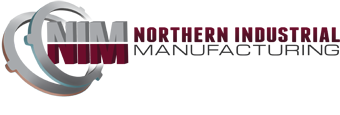Revolutionizing Parts Management: The Impact of Color Coding Shims in Automotive Organization
The automotive industry is a complex ecosystem where precision and efficiency are paramount. An integral part of this ecosystem is parts management, which involves organizing, storing, and tracking countless components used in vehicle manufacturing and maintenance. The importance of efficient parts management cannot be overstated, as it can significantly impact the productivity and profitability of an automotive company.
Traditionally, parts management has been a manual and time-consuming process, often leading to inefficiencies and errors. However, with the advent of innovative techniques and technologies, the process has been undergoing significant transformations. Among these innovations, the use of shims and color coding identification have emerged as game-changers, revolutionizing parts management in the automotive industry.
This article aims to shed light on the role of shims and color coding in automotive organization, their benefits, and how they are shaping the future of parts management. Whether you are an automotive professional looking to optimize your parts management process or a curious reader interested in automotive technologies, this article offers valuable insights.
Understanding Shims in Automotive Organization
Shims, relatively unsung heroes in the automotive world, play a crucial role in parts management. These thin pieces of material, typically metal, are used to fill small gaps or spaces between objects, allowing for precise adjustments and alignments. Shims come in various shapes and sizes, and their uses in automotive organization are manifold.
One of the primary applications of shims is in the assembly and maintenance of vehicles. They are used to ensure the perfect fit and alignment of various components, from engines to transmissions and axles. By providing the right amount of spacing, shims help to enhance the performance and longevity of these components.
In the context of parts management, shims serve as an efficient tool for organization and identification. Different types of shims, such as precision shims, transmission shims, and axle shims, are used for different purposes, making it easier to manage and track parts. Moreover, shims are durable, reusable, and cost-effective, further enhancing their value in automotive organization.
Importance of Precision Shims: Transmission Shims & Axle Shims
Precision shims, as the name suggests, are designed for precise adjustments and alignments. In the automotive industry, precision shims are commonly used in the assembly and maintenance of transmissions and axles. Transmission shims are used to adjust the clearance between transmission components, helping to reduce noise, vibration, and wear. On the other hand, axle shims are used to align the axles correctly, enhancing the vehicle’s stability and performance.
Both transmission shims and axle shims are crucial for the smooth operation of vehicles. They ensure the components function optimally, enhancing fuel efficiency, and extending the lifespan of the components. Moreover, by providing a systematic way to manage these critical components, precision shims contribute significantly to parts management, driving efficiency and productivity.
Precision shims also play a vital role in quality control and standardization in the automotive industry. By ensuring precise adjustments and alignments, they help to maintain the quality and consistency of automotive components. This is particularly important in today’s competitive market, where customer expectations and regulatory standards are high.
The Role of Metal Spacers in Automotive Parts Management
Metal spacers, like shims, are used to fill gaps or spaces between components. However, while shims are typically thin and used for fine adjustments, metal spacers are thicker and used for larger adjustments. Despite this difference, metal spacers, like shims, play a significant role in automotive parts management.
In the assembly and maintenance of vehicles, metal spacers are used to ensure the correct spacing between components. They help to prevent components from rubbing against each other, reducing wear and tear, and enhancing performance. Moreover, metal spacers are also used to secure components in place, ensuring safety and stability.
In parts management, metal spacers serve as an efficient tool for organization and identification. They can be color-coded and labeled for easy identification, making it easier to manage and track parts. Moreover, metal spacers are durable and reusable, further enhancing their value in automotive organization.
The Impact & Benefits of Color Coding in Parts Management
Color coding is a simple yet powerful technique used in parts management. By assigning different colors to different parts or categories of parts, color coding makes it easier to identify and locate parts. This not only saves time but also reduces the risk of errors, leading to improved efficiency and productivity.
One of the main benefits of color coding is that it simplifies the parts management process. Instead of having to read labels or part numbers, workers can quickly identify parts based on their color. This is particularly useful in a complex environment like the automotive industry, where there are countless parts to manage.
Moreover, color coding can also enhance safety and compliance in the automotive industry. By color-coding hazardous parts or parts that require special handling, workers can be alerted to potential risks, helping to prevent accidents and ensure compliance with safety regulations.
How Color Coding Identification Revolutionizes Parts Management
Color coding identification has revolutionized parts management in several ways. Firstly, it has made the process more visual and intuitive. Instead of relying on text-based labels or part numbers, workers can use color as a visual cue, making it easier to identify and locate parts. This not only speeds up the process but also reduces the risk of errors, leading to improved efficiency and productivity.
Secondly, color coding identification has enhanced safety and compliance. By color-coding hazardous parts or parts that require special handling, workers can be alerted to potential risks. This not only helps to prevent accidents but also ensures that safety regulations are adhered to.
Furthermore, color coding identification has helped to standardize the parts management process. By using a consistent color coding system, companies can ensure that parts are managed and tracked in a uniform manner across different locations and teams. This not only enhances efficiency but also improves the accuracy and reliability of parts management.
The Advantages of Color Coding Metal Shims
Color coding metal shims brings multiple advantages to the table. Firstly, it simplifies the identification process. Workers can easily distinguish between different types of shims based on their color, reducing the time and effort required to locate and identify shims.
Secondly, color coding metal shims enhances safety. By color-coding shims that require special handling or are used in critical applications, workers can be alerted to potential risks, helping to prevent accidents and ensure safety.
Moreover, color coding metal shims aids in quality control and standardization. By ensuring that shims are consistently color-coded, companies can maintain the quality and consistency of their shims, meeting customer expectations and regulatory standards.
Growing Importance of Shims & Color Coding
Looking ahead, the importance of shims and color coding in automotive organization is set to grow. As the automotive industry continues to evolve, the need for efficient and precise parts management will only increase. Shims and color coding, with their ability to enhance efficiency, accuracy, and safety, are well-positioned to meet this need.
In the future, we can expect to see more advanced and sophisticated uses of shims and color coding. For instance, companies may start using smart shims equipped with sensors and RFID tags for real-time tracking and monitoring. Similarly, companies may adopt advanced color coding systems that use machine learning and artificial intelligence to automatically identify and categorize parts.
Moreover, as sustainability becomes a key concern in the automotive industry, the use of reusable and recyclable shims and color coding materials will become increasingly important. Companies that can successfully implement these practices will not only enhance their parts management process but also contribute to a more sustainable future.
Best Practices for Implementing Color Coding Shims
Implementing color coding and shims in your parts management process can be a game-changer. However, to reap the full benefits, it’s important to follow some best practices. Firstly, develop a consistent color coding system that is easy to understand and follow. This system should be standardized across all locations and teams to ensure uniformity.
Secondly, train your workers on the color coding system and the use of shims. Ensure they understand the importance of these tools and how to use them effectively. Regular training and refresher courses can help to reinforce these practices and keep your workers up to date.
Thirdly, monitor and evaluate the effectiveness of your color coding and shims. Use metrics such as time saved, errors reduced, and compliance rates to assess the impact. Based on these findings, make necessary adjustments and improvements to optimize the process.
Finally, ensure your color coding and shims are durable and reusable. This not only enhances their value but also contributes to sustainability.
The Transformative Impact of Color Coding Shims in Automotive Organization
In conclusion, shims and color coding are revolutionizing parts management in the automotive industry. By enhancing efficiency, accuracy, and safety, these tools are transforming the way parts are managed and tracked. Looking ahead, their importance is set to grow, with more advanced and sustainable uses on the horizon.
Whether you are an automotive professional looking to optimize your parts management process or a curious reader interested in automotive technologies, the transformative impact of shims and color coding is undeniable. So, why wait? Start exploring the world of shims and color coding today and drive your automotive organization towards a more efficient and productive future.
For more information about shims, precision shims, transmission shims, axle shims, metal spacers, color coding metal shims, and color coding identification, feel free to contact us. Our team of experts is always ready to assist you with your automotive parts management needs.
Automotive Color Coding Shims | Michigan
Northern Industrial Manufacturing is your turnkey partner for even the most challenging projects. Our experts understand which options work best for your specific material and surface finish requirements, and offer the most advanced technologies to meet the needs of your unique project.
We will bring your parts to market on time – with assistance from prototype to volume production – quickly, affordably and efficiently as possible.
Thank you for visiting our blog where we keep customers updated and informed on the latest processes in automotive parts manufacturing!
Please check back often if you would like to learn more about the world of precision thrust washers, selective shims, spacers, and other automotive parts.




